Strahov Monastery, built in 1140, is best known for its magnificent library. The library, decorated with magnificent frescoes, contains a collection of over 200,000 books.
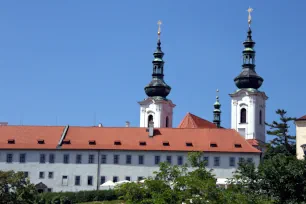
In 1140 King Vladislav II built a new monastery on the approach route to the Prague Castle. The monastery, which became known as Strahov Monastery, wasn’t much of a success until 1143, when a group of Premonstratensians settled here.
The Premonstratensians are a Roman Catholic order of canons founded in 1120 by St. Norbert. They are also known as the Norbertians or White Canons.
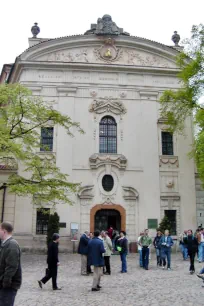
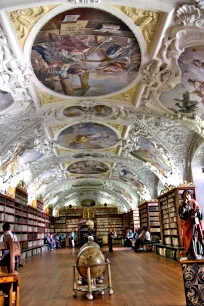
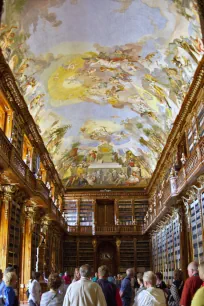
A Tumultuous History
The new monastery soon started to prosper and in a short time frame it became a center of intellectual and spiritual life. By the end of the twelfth century, most of the original wooden buildings had been replaced by stone Romanesque buildings.
The monastery was rebuilt in the Gothic style after a fire destroyed the complex in 1258. It continued to prosper until 1420 when it was plundered by Hussites. Decline set in and continued until the end of the sixteenth century, when most of the buildings were repaired. The monastery was plundered and sacked again during the Thirty Years’ War (1618-1648).
In the late seventeenth and early eighteenth century, the monastery was expanded, this time in the Baroque style. After a bombardment by the French army in 1742 most of the medieval Gothic buildings were rebuilt in Baroque style.
Strahov Library
As a result, the current buildings at Strahov Monastery were constructed mainly in the seventeenth and eighteenth centuries. The most interesting parts of the monastery are the Theological Hall and Philosophical Hall.
Theological Hall
The Theological Hall is the oldest part of the famous Strahov Library. It was built between 1671 and 1679 after a design by Giovani Domenico Orsi. It houses the theological book collection of the library. Its collection contains over 200,000 books and includes works from famous printers such as Christoffel Plantin. Besides valuable books, the hall also contains several geographical and astronomical globes from the seventeenth century.
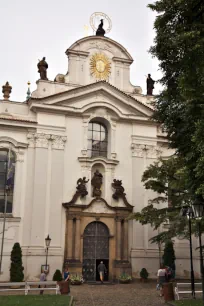
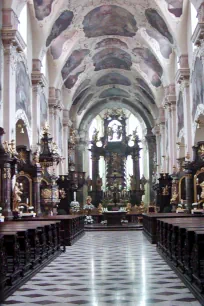
The frescoes on the ceiling of the Theological Hall took four years to complete. They depict the profession of the librarian.
Philosophical Hall
The Philosophical Hall was built a century later, between 1782 and 1784. The ceiling’s frescoes, depicting the history of mankind, were created in 1794 by the Austrian painter Franz Anton Maulbertsch. The two-story-high hall contains books obtained from an old monastery in Moravia.
Strahov Church
The history of Strahov monastery’s church reflects that of the monastery itself. Originally built as a Romanesque basilica, the church was rebuilt in Gothic style after it was destroyed by fire in 1258. Two centuries later, the church was plundered by the Hussites and repaired in Renaissance style. After a bombardment by French troops in 1742 the church was repaired once again, this time in Baroque style.
The Strahov church, which is also known as the Basilica of our Lady, has a richly decorated interior. The nave’s 16-meter-high vault features frescoes painted in 1774. Along the side of the nave above the arcades are twelve frescoes depicting the life of St. Norbertus, founder of the Premonstratensians. The Strahov church also houses an organ, on which Mozart played during his visit to the monastery in 1787.

